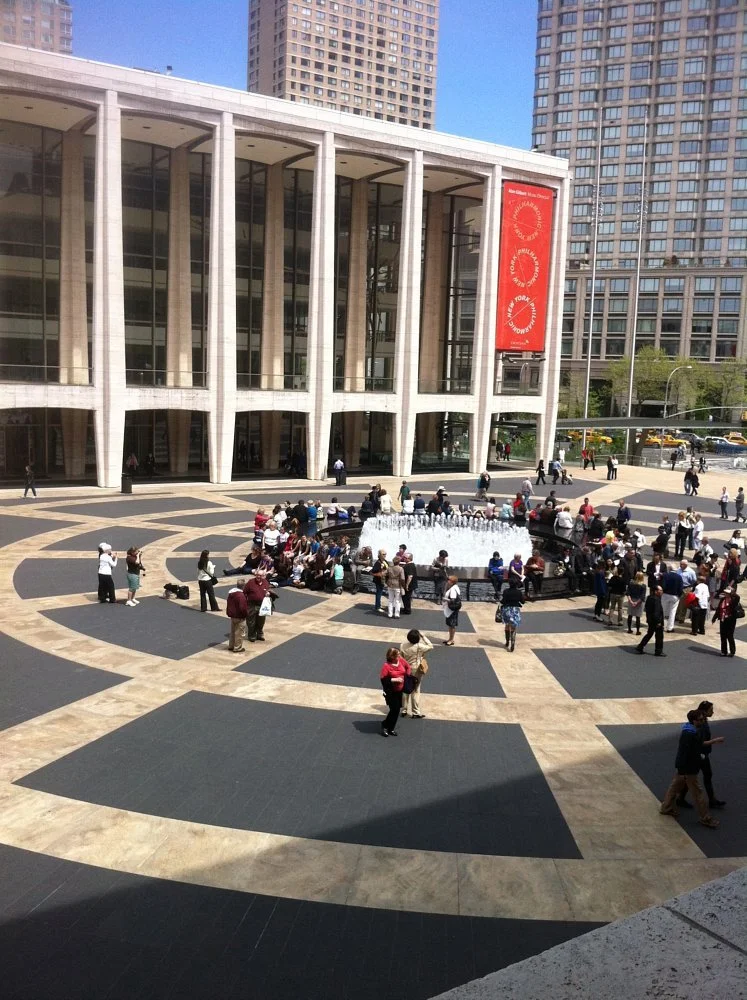Turf, Urban Renewal and Racism in the New West Side Story
In the 1950s, slum clearance was hailed as a way to improve housing, raise public health, and reduce the power of extortionate landlords. Today, the new film version of West Side Story suggests that slum clearance fueled gang violence and ushered in gentrification.
Figure 1. Tony and Maria, Jets and Sharks: West Side Story, 2021. Courtesy 20th Century Studios and Amblin Partners.
The 1961 film version of West Side Story opens with an overhead shot of Manhattan that zooms down to the finger-snapping Jets, who dominate their turf with menace and cool. When they meet a lone Bernardo, they hassle him. Bernardo sensibly responds by finding two comrades to give him extra muscle, and so are born the Sharks. A gang war is on, fought out in a landscape of tenements and construction sites. There's no doubt that the Jets started it.
In Steven Spielberg's new version, the camera zooms instead into a blasted urban renewal site, where the Jets are mustering to paint over a Puerto Rican flag inscribed on a wall in the Sharks' turf. In conversations between cops and antagonists, we learn that the neighborhood is slated for clearance that will bring snazzy new apartment buildings that the Jets, the Sharks, and their families will never be able to afford.
Figure 2. San Juan Hill before Lincoln Center, ca. 1956. From City of New York, Committee on Slum Clearance, Lincoln Square: Slum Clearance Plan Under Title I of the Housing Act of 1949 as Amended, May 28, 1956.
Who's the villain? When the camera later reveals a crowd of Puerto Rican demonstrators, one of them holds a sign saying "Robert Moses Fuera [Get Out Of] San Juan Hill" — the old name for the neighborhood about to be razed for Lincoln Center.
When you tell a story shapes how you tell it. West Side Story emerged when there was widespread faith in government solutions to urban problems; today, that faith is an article of the past — especially when it comes to creating affordable housing. But to blame urban renewal for gang wars in the 1950s is to underestimate the history of racism, and racist violence, in New York City.
Long before the city began to transform the West Side through urban renewal, New Yorkers used everything from policing to gang fights to real estate covenants to control and confine people of color. If anything, Spielberg's otherwise strong film underplays the depth of the city's racism.
In 1900, when large numbers of African Americans were concentrated in San Juan Hill, whites and police rioted for two days after an African American man was arrested for stabbing a plainclothes policeman who charged his girlfriend with "soliciting." Cops and whites raged through the streets, beating Blacks.
In the 1940s, before massive public housing construction transformed the West Side, the movement of Blacks and Puerto Ricans into Irish neighborhoods sparked gang wars between teenagers and violence against families. In the same period, anti-Semitic Irish street gangs attacked Jewish youths and Jewish institutions. The problem was so notorious that West Side Story was initially conceived as an interfaith love story between a Jewish girl and a Catholic boy set on the East Side.
To be sure, public housing construction and other types of slum clearance disrupted neighborhoods, displaced people, and rattled already tight communal nerves. But even in neighborhoods with little clearance, like Washington Heights in upper Manhattan, Blacks and Latinos were under attack.
Figure 3. At 453 West 166 Street, in Washington Heights, Mrs. Bernice Lythcott and her son Leonard stare through a window broken by racists trying to intimidate Black residents. Her husband, Alphonso, was the superintendent. The Lythcotts were newly arrived from the Carolinas. Photo by Weegee. Bequest of Wilma Wilcox. Originally published in PM Daily, Oct. 18, 1943. Courtesy International Center of Photography.
In 1943, Weegee photographed the aftermath of an attack on a Black family's home in Washington Heights. In 1954, in the same neighborhood, a municipal report noted the firebombing of a Puerto Rican family. Three years later, when West Side Story was opening on Broadway, a gang-related murder in Washington Heights rocked the city. Michael Famer, an Irish American youth, was killed in a gang raid on Washington Heights sparked by white gangs' efforts to keep Black and Latino youths out of a municipal pool in Highbridge Park.
West Side Story is the story of a turf war, an essential element of city life and the kind of tale that New Yorkers love to tell. (Think Jane Jacobs and Robert Moses.) But in turf wars, we like to think of turf disruptors as bad guys, and it would be unfair — then or now — to depict the Sharks as bad guys. Another bad guy must be found: Robert Moses.
“Spielberg’s otherwise strong film underplays the depth of the city’s racism”
Moses has become an easy man to hate, but that's because popular memory simplifies his complexity and exaggerates his power. From this film, you wouldn’t know that he played a major role in building Rochdale Village — a United Housing Federation housing cooperative in Queens, with roots in the labor movement, that was once the largest racially integrated housing complex in the United States. Moses was no battler for racial justice, but he cannot be blamed for the racism in New York City that preceded his rise and endured after his fall.
The new West Side Story's spotlight on urban renewal treats it as the cause of urban problems, and not what it was: a response, sometimes useful sometimes badly flawed, to the problem of housing in post-World War II New York. The public housing built after World War II certainly upended neighborhoods and created too many sterile complexes devoid of stores or the ingredients of a healthy street life, but today it provides homes for working people and lower income households in a city where affordable housing is in painfully short supply.
Figure 4. Bernardo and Anita: West Side Story, 2021. Courtesy 20th Century Studios and Amblin Partners.
To be fair to Spielberg, he makes serious efforts to make the people in his film historical characters in their own right — redeeming both the Jets and the Sharks from the thin characterizations of the original film. The historian Virginia Sánchez–Korrol is listed in the credits, and Spielberg's film surpasses its predecessor in its richer characterization of Puerto Ricans, who speak Spanish in the new film and have a communal and emotional life of their own, with ambitions, pride, and frustrations.
Figure 5. Lincoln Center, 2011. Photograph by Allison Meier, courtesy Flickr, under Creative Commons license CC-BY-SA 2.0.
West Side Story bears the unusual burden of being born as a musical that was once up-to-the-minute in its topicality, but is now a piece of history. The real-life survivors of Fifties gang wars are men in their eighties, and the corner where the Jets cross into Shark territory —West 68th Street and Broadway — is today defined by tall buildings, a bank, and a movie theater. Flattening San Juan Hill to build Lincoln Center was an act of urbicide (to borrow a phrase from Marshall Berman) that accelerated gentrification, but the construction of housing projects in the Fifties rarely had this effect.
If the 1950s saw an excessive faith in government's ability to solve urban problems, our own time is defined by the failure of free-market solutions to do the same. Getting the full history of our present right matters because New Yorkers still need to increase school integration and create an adequate supply of affordable housing. It does no good to blame government action or one man for problems with deep roots in the politics, culture, and everyday life of New York City.
It would be a shame if audiences for the new West Side Story left this otherwise good film with a tabloid headline rattling around in their heads:
JETS, SHARKS: VICTIMS OF URBAN RENEWAL
"Robert Moses made us do it, " say wayward teens
Citation
Snyder, Robert W. “Turf, Urban Renewal and Racism in the New West Side Story” PLATFORM, December 20, 2021.







